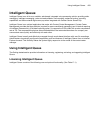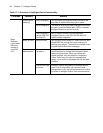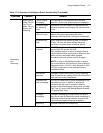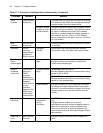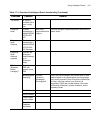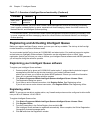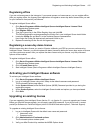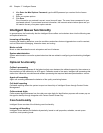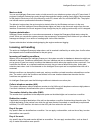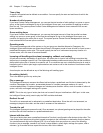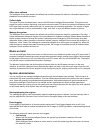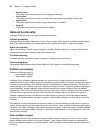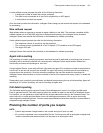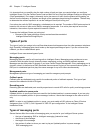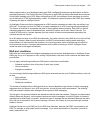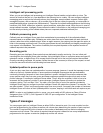Intelligent Queue functionality 417
Music on hold
You can use Intelligent Queue as a music on hold source for your telephone system using a PC sound card, if
equipped. Intelligent Queue plays music through the sound card using a rotating (loop) playlist. Music sources
for the playlist include any or all of the following: audio CD, stored .wav file, and stored MP3 file. The playlist
can include music or prerecorded information messages.
The behavior begins when the music engine is started, either by the Windows service or via the user
interface. A user with Intelligent Queue administrator rights can start or stop the music engine from the user
interface. Once started, the music engine will loop through the play list, playing continuously until it is stopped.
System administration
Intelligent Queue enables you to record announcements or change the Emergency Mode status using the
phone. When you record new system prompts, they are stored in a temporary inbox folder until you name the
message and assign it to an action or message plan via the Web interface.
System administration includes starting/stopping the engines and event logging.
Incoming call handling
The action an Intelligent Queue port takes when a call is received is defined by an action plan. A call’s action
plan depends on the conditions defined for the port group.
Incoming call handling conditions
When a call is detected at an Intelligent Queue port, the system consults its database to determine which are
defined for that port. Conditions are defined in the user interface and act as a decision tree structure. Each
port or group of ports has a set of conditions that determine which action plan applies to the current call. If no
conditions are defined, or no defined conditions are met, the port uses a default action plan. Action plan
selection starts when a call is first detected on the Intelligent Queue port and is completed before the call is
answered.
Multiple conditions can be applied to each port, and any condition can lead to another subcondition or action
plan. The order in which the conditions are defined in the user interface determines the order that the
conditions are applied to a call.
An Intelligent Queue port uses the following conditions to determine an action plan:
Caller’s telephone number (ANI)
The system compares a callers’s telephone number to a list (ANI map) of telephone numbers or digit patterns.
If a match is detected, the defined action plan or subcondition is applied.
The number dialed by the caller (DNIS)
The number that is presented to the telephone system as the dialed digits can be used as a condition.
Redirection number
If applicable, the original destination of the call can be used as a condition for determining the action plan. The
original destination is the number from which the call was diverted, forwarded, or transferred (unsupervised
transfers). For ACD interflow, this device is the ACD path from where the call came.
Day of the year
Any specific date can be defined as a condition. You can apply a subcondition, such as time of day, to make
the condition more specific.
Day of the week
Any specific day of the week can be defined as a condition. You can apply a subcondition, such as time of
day, to make the condition more specific.



